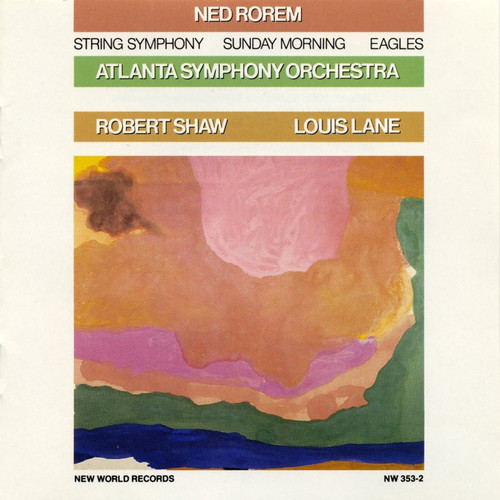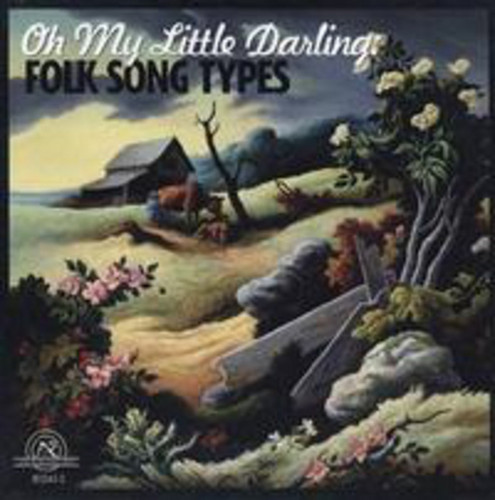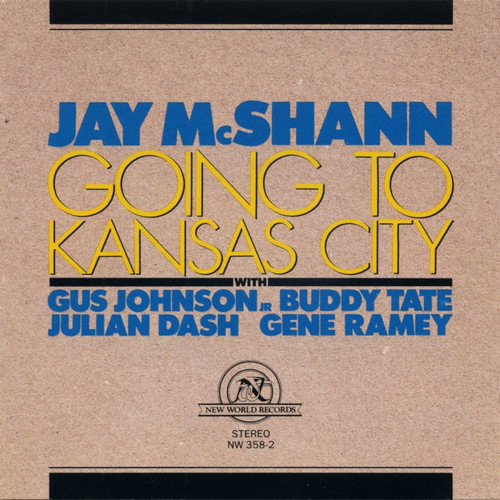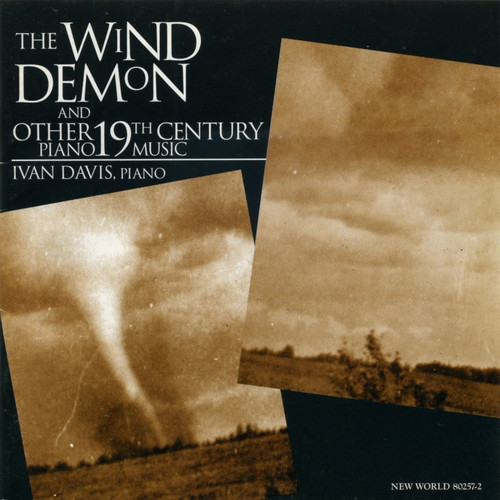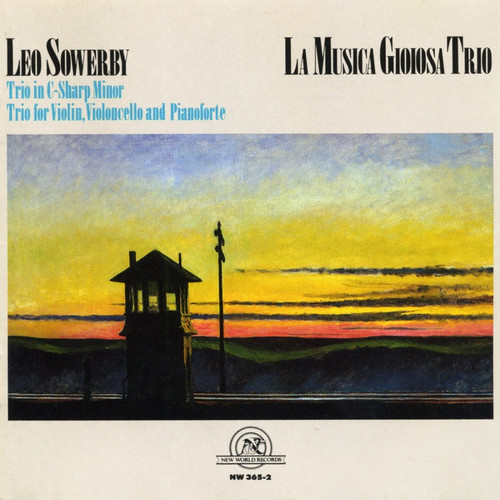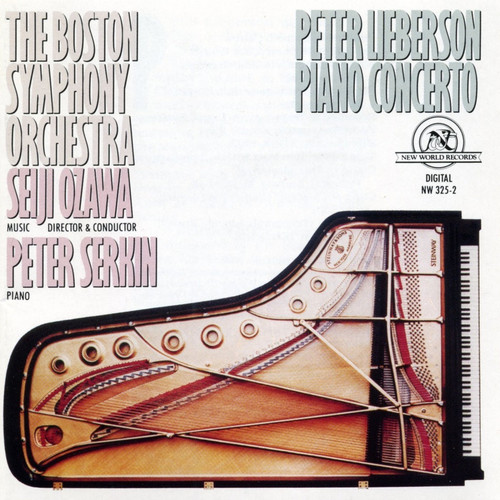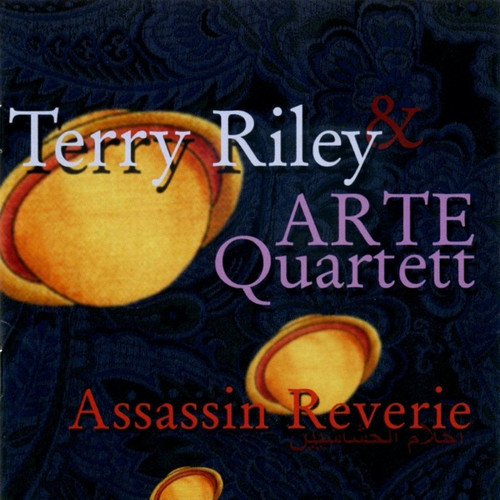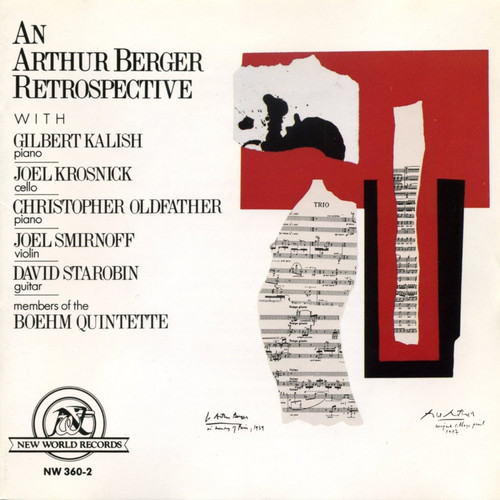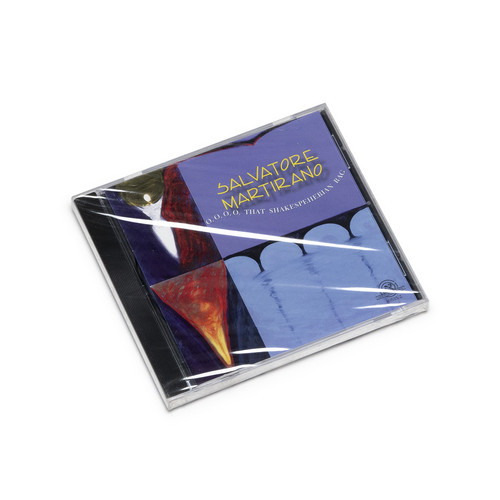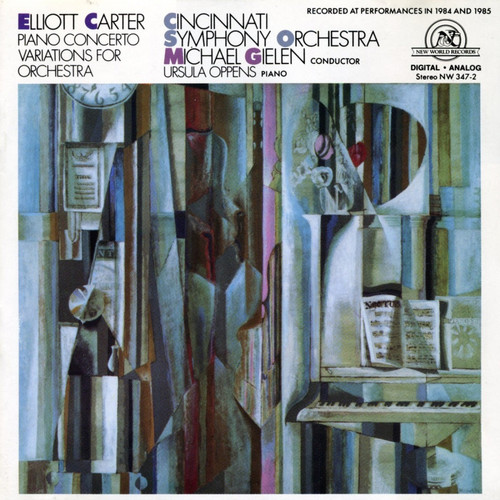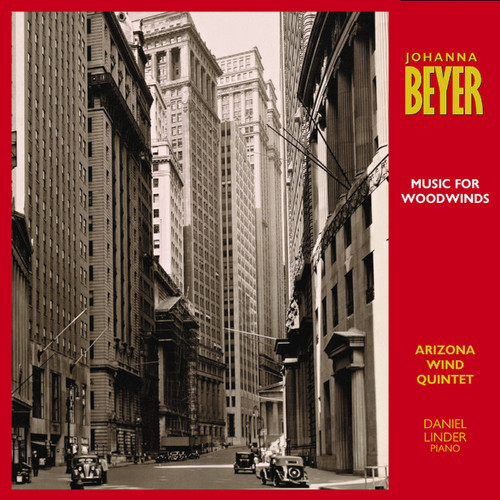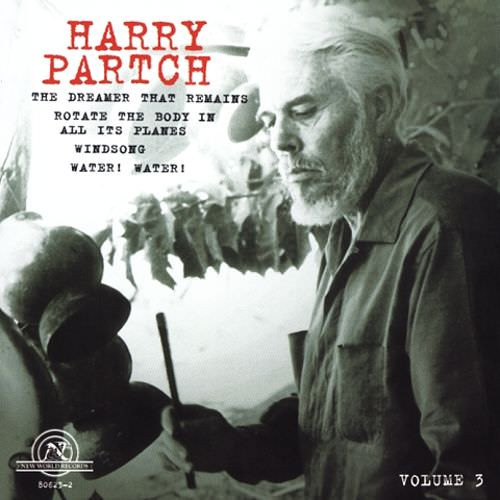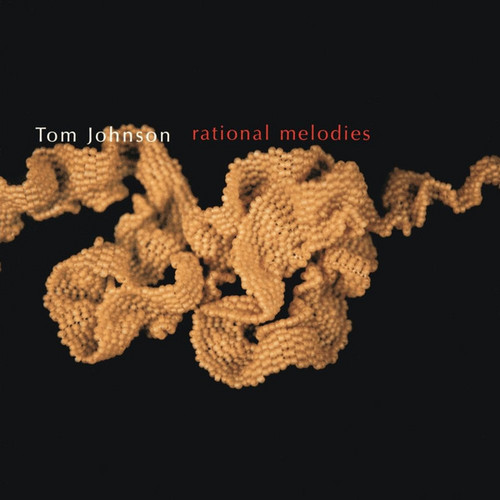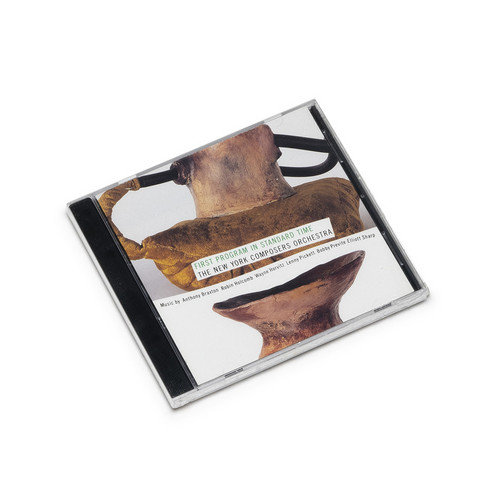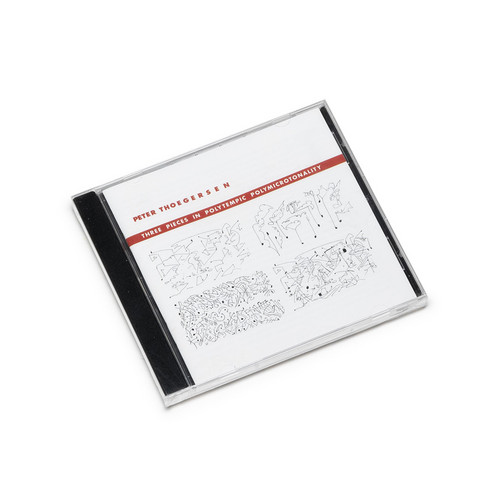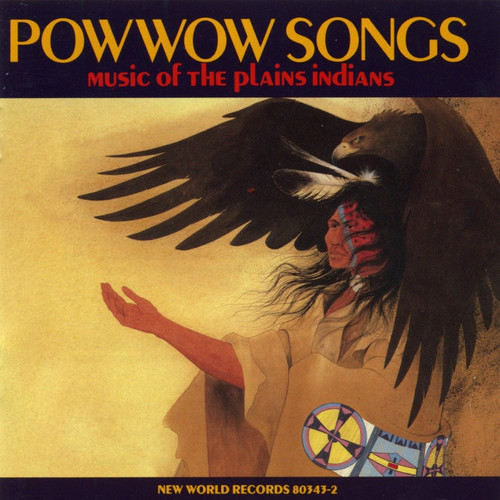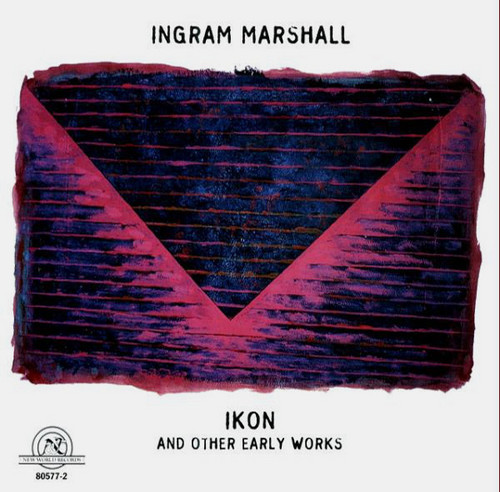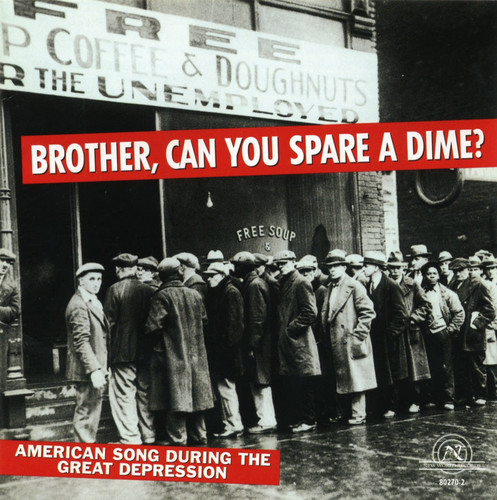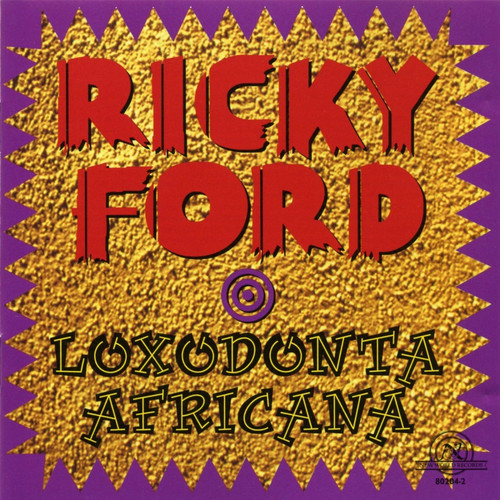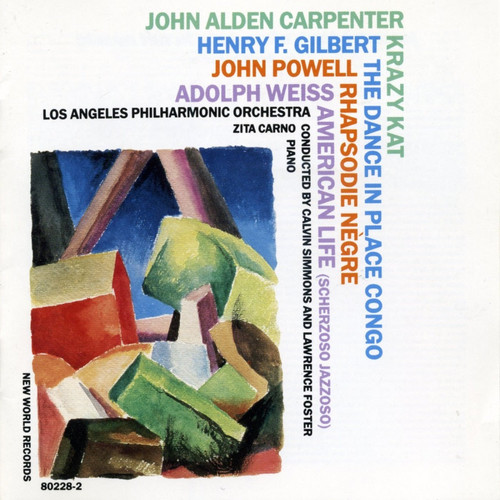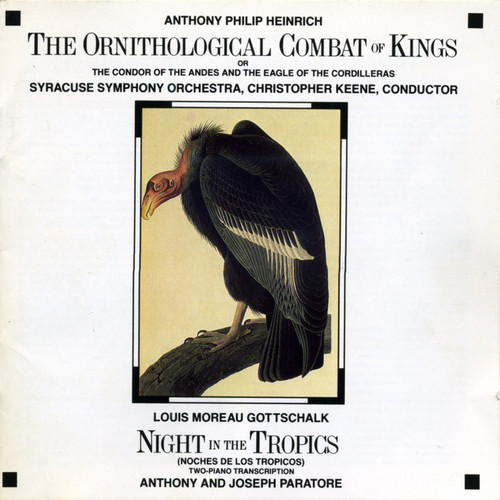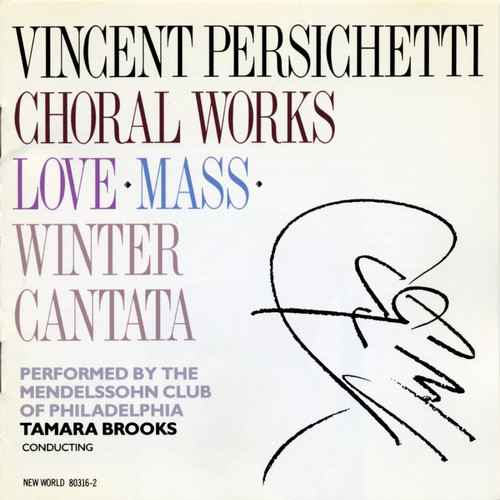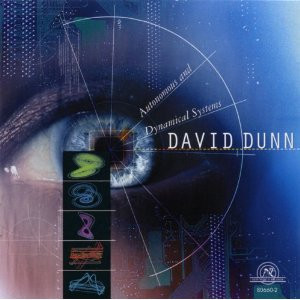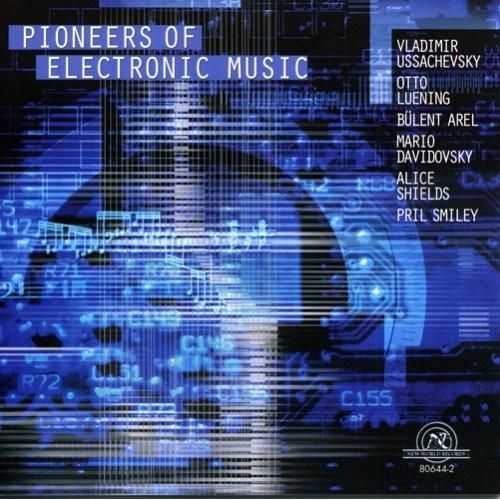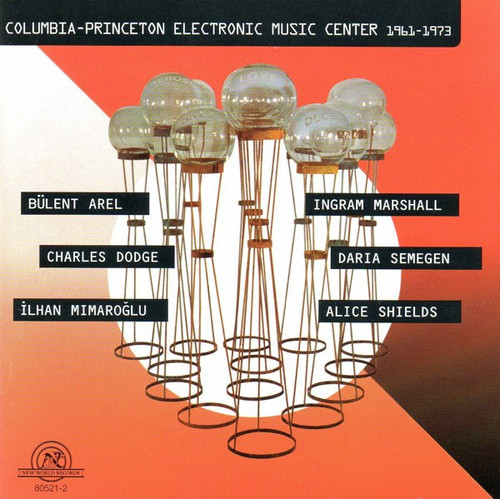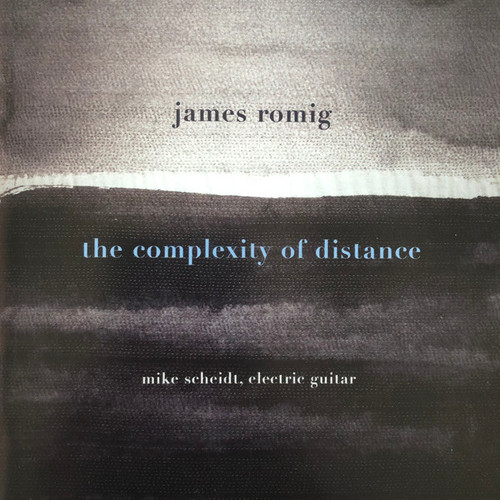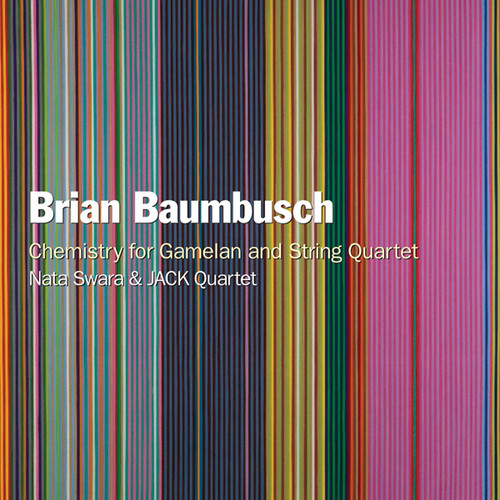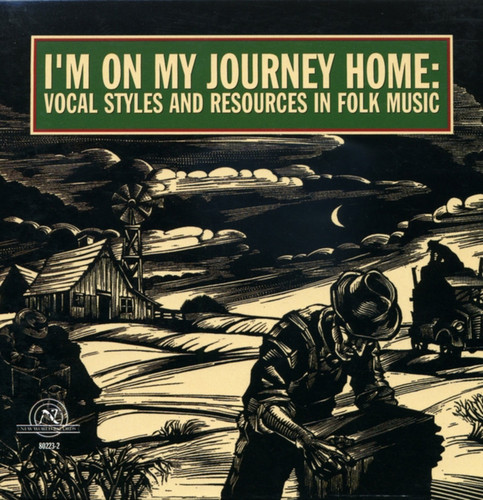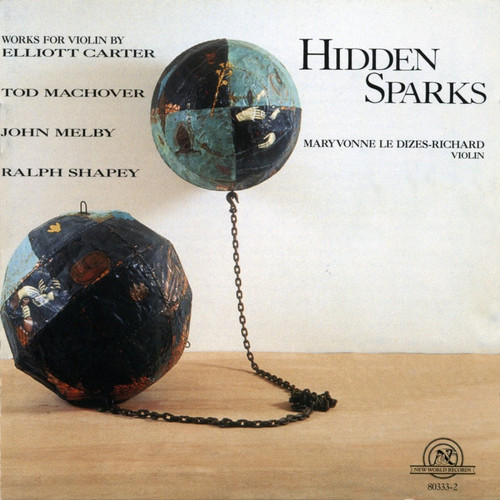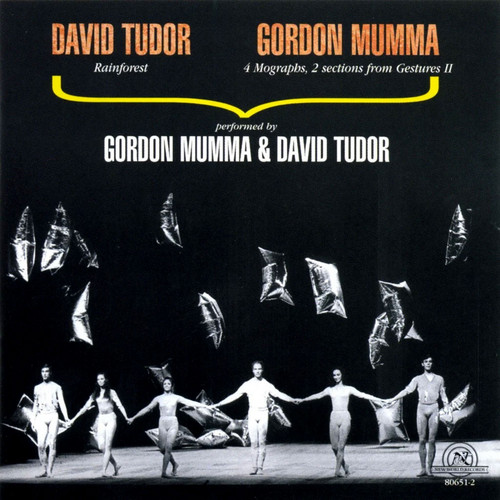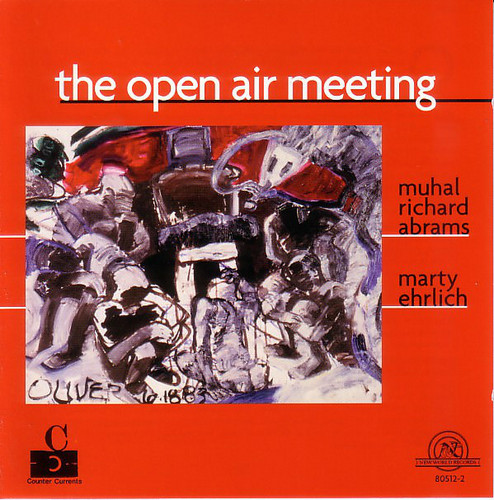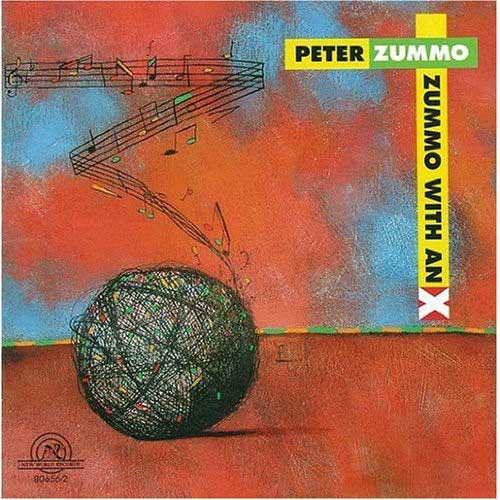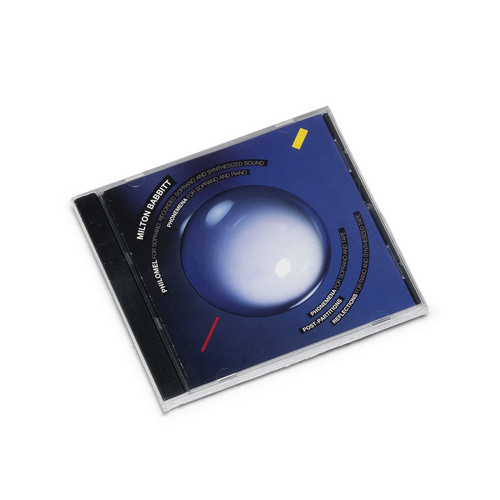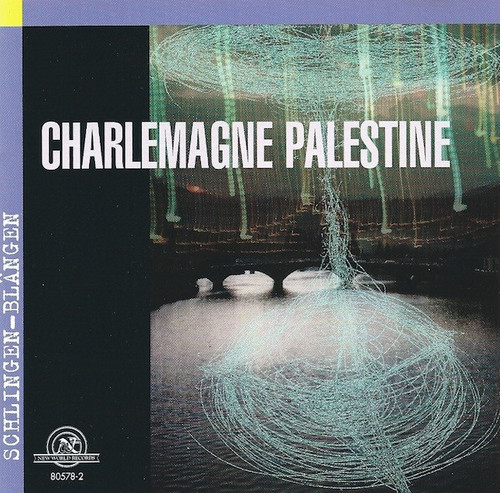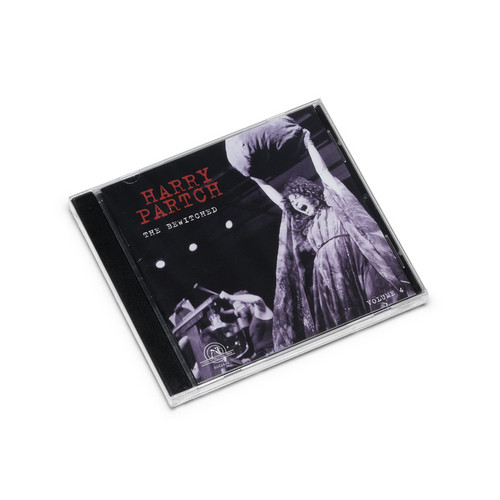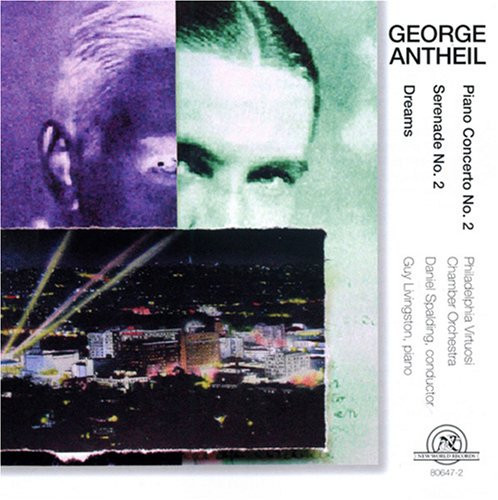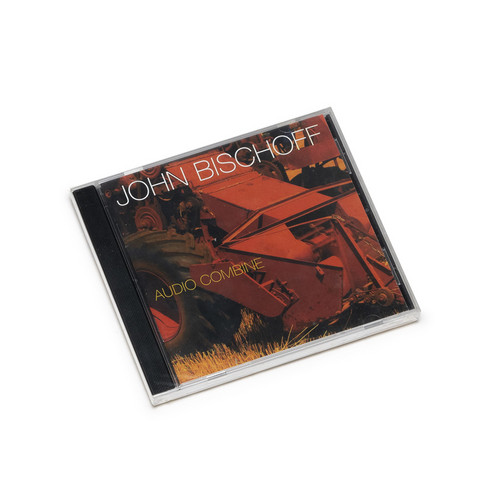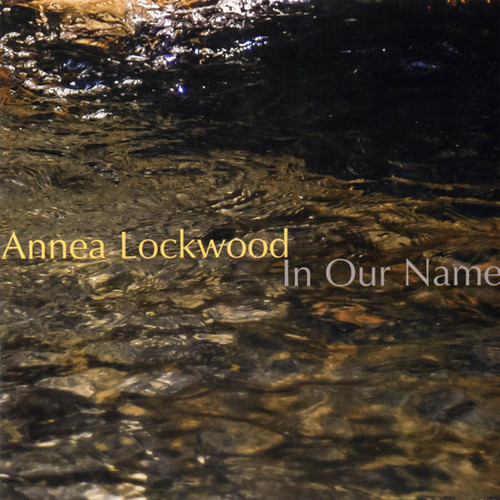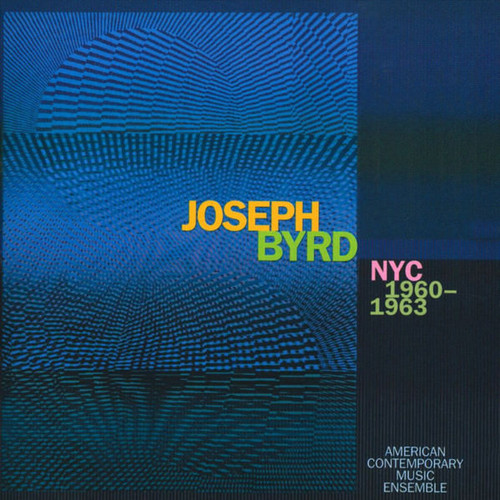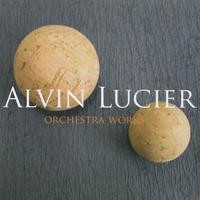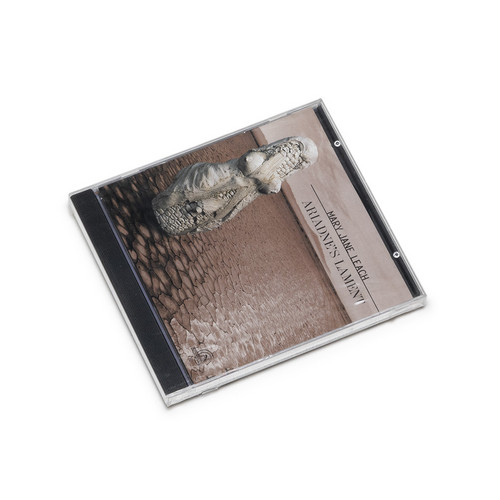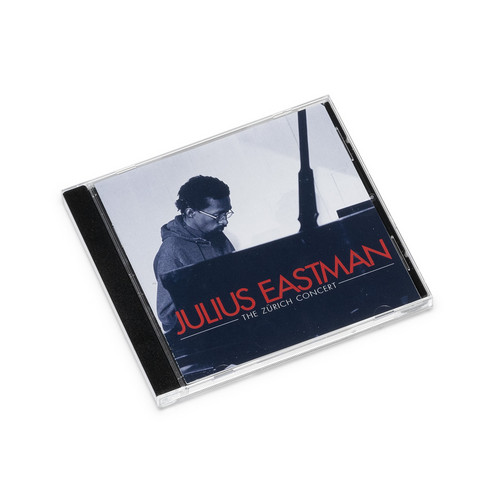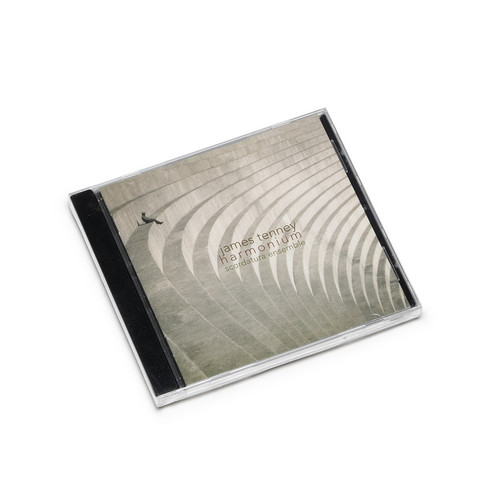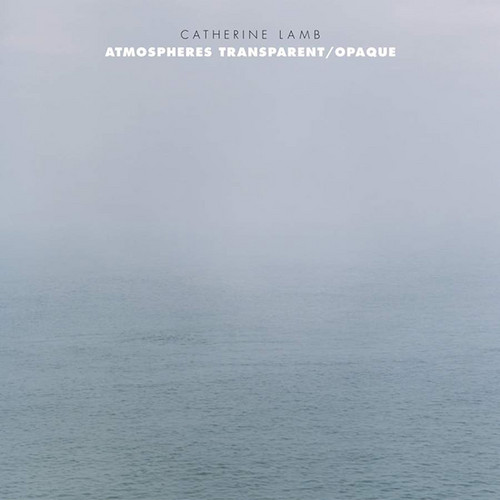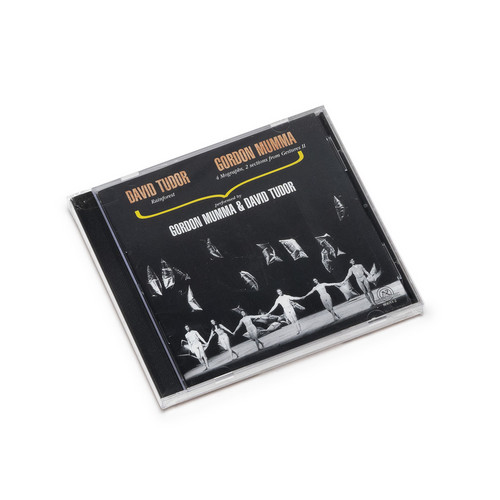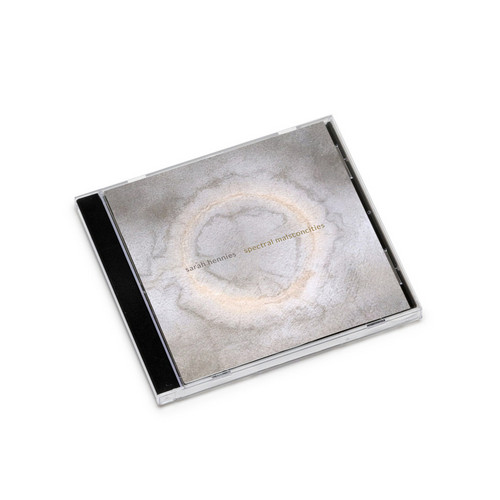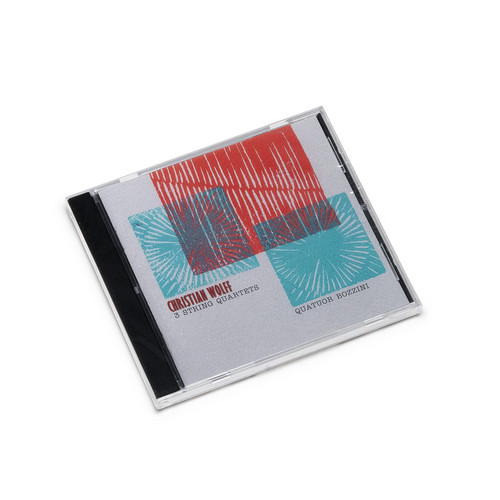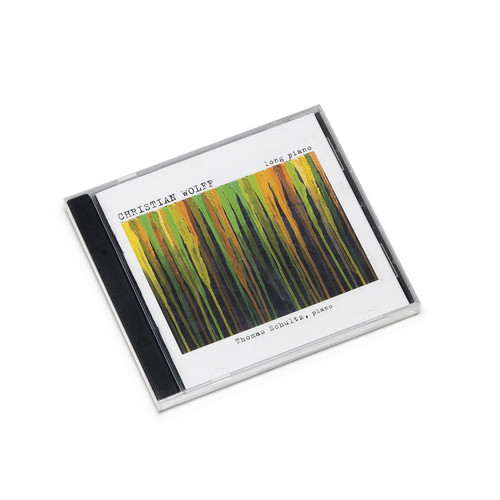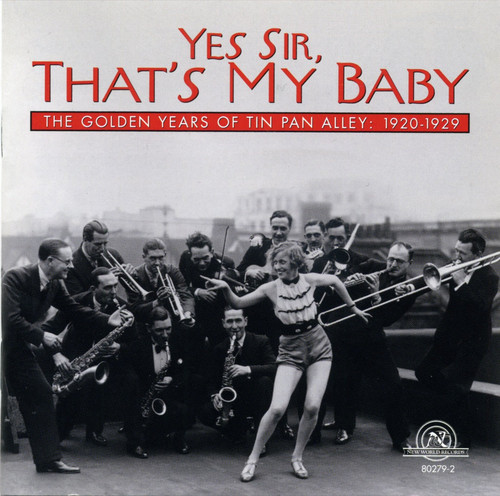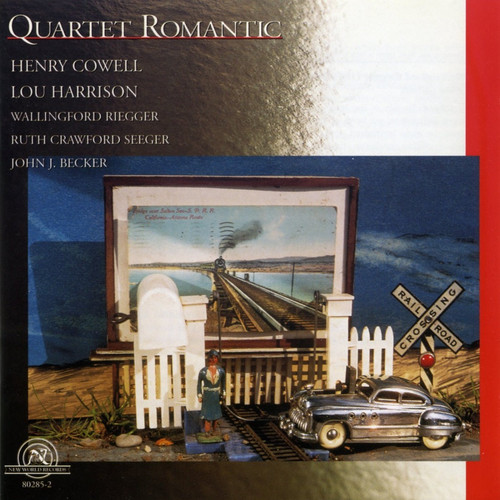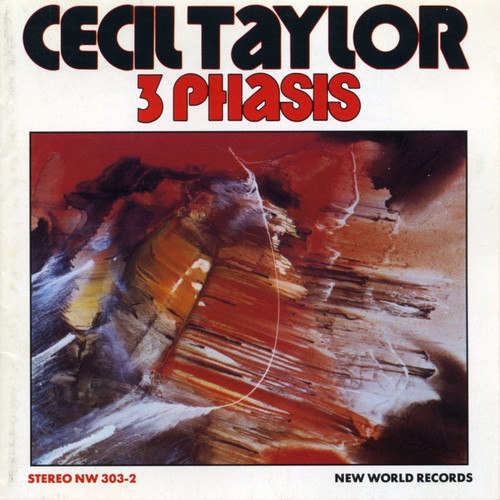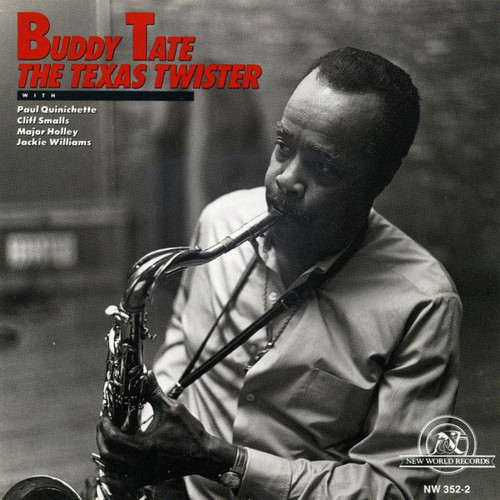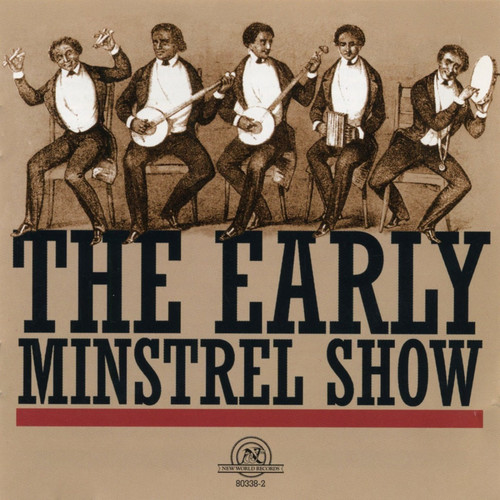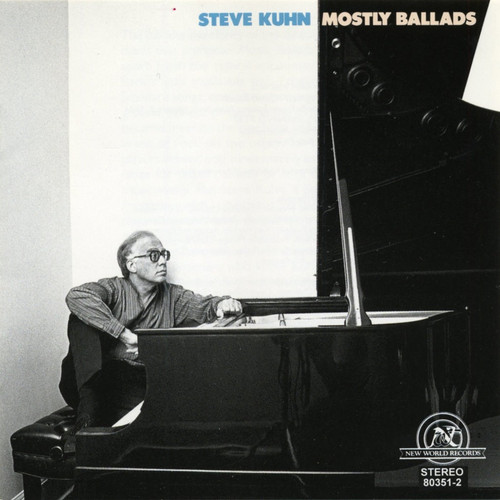Search (1 labels)
String Symphony / Sunday Morning / Eagles
Perhaps best known for his vast catalogue of vocal music-operas, song cycles, and choral works-Ned Rorem (b. 1923) also has composed three symphonies, four piano concertos, and an impressive array of other orchestral and chamber works. He received th…
Oh My Little Darling: Folk Song Types
This superb anthology of old ballads and other folk-song types comprises pre-war commercial and field recordings made in the rural Southeast, the part of the United States that most closely met the textbook definition of a "folk culture," in which cu…
Going To Kansas City
Jay McShann secured a lasting place in jazz history on April 30, 1941, when he became the first bandleader to usher Charlie Parker into a studio for a commercial recording session. For years, that was how McShann was remembered, if at all—as an early…
The Wind Demon And Other 19th Century Piano Music
This compendium of American piano music of the last half of the nineteenth-century is a potpourri of popular salon pieces and works of more serious aspirations. Together they conjure a characteristic portrait of the society for which they were compos…
Trio In C-Sharp Minor / Trio For Violin, Violoncello And Pianoforte
Leo Sowerby (1895-1968) lived for most of his career in Chicago where he spent more than 40 years on the faculty of the American Conservatory and nearly as long as organist-choirmaster of St. James Cathedral. His music can be described as "eclectic" …
Piano Concerto
The Piano Concerto was Peter Lieberson's first orchestral work and was, from the outset, conceived with Peter Serkin in mind as the soloist. He wrote it after a long period of immersion in the study of Tibetan Vajrayana Buddhism. Throughout what Lieb…
Assassin Reverie
** 2021 Stock ** Arte Quartett: Beat Hofstetter, soprano saxophone; Sascha Armbruster, alto saxophone; Andrea Formenti, tenor saxophone; Beat Kappeler, baritone saxophone Terry Riley, vocals, piano and harpsichord (Uncle Jard) A free spirit, maverick…
Arthur Berger, Gilbert Kalish, Joel Krosnick, Christopher Oldfather, Joel Smirnoff, David Starobin, Members Of The Boehm Quintette
An Arthur Berger RetrospectiveFor over fifty years Arthur Berger's output consisted of sturdily crafted pieces that reflected the mixed lineage of Stravinsky, Schoenberg, and Copland. Born in 1912 and raised in the Bronx, he first studied at City College and New York University, …
O, O, O, O, That Shakespeherian Rag
O,O,O,O, That Shakespeherian Rag collects six of the most important compositions from his relatively small body of work. By the late 50s Martirano had begun to freely incorporate elements of jazz and popular music. O,O,O,O, That Shakespeherian Rag(19…
Piano Concerto / Variations For Orchestra
While a student at the Horace Mann School, Elliott Carter came to know Charles Ives. Carter continued his education at Harvard and then studied with Nadia Boulanger in Paris. Ives and Boulanger were formative influences: Carter's music draws on Ameri…
Symphony No. 4 / Session I
William Bolcom was born on May 26, 1938, in Seattle, and trained at the University of Washington and Stanford University, as well as with Darius Milhaud. He has written four symphonies, concertos for piano and for violin, chamber and solo instrumenta…
Music for Woodwinds
Through her novel approaches to texture and melody, German-American composer Johanna Magdalena Beyer (1888–1944) became one of the most distinctive modernist voices of the mid-20th century. Beyer was the first woman known to have composed for electri…
Earle Brown: Selected Works 1952- 1965
This long-awaited reissue of the CRI recording of Earle Brown’s (1926–2002) music is the best overview of his seminal early works. “It is obviously a great pleasure for me that Cri is re-releasing its 1974 recording of my work, and an even greater pl…
The Harry Partch Collection, Volume 3
The four works on this newly remastered CD are eloquent testimony to Harry Partch’s aesthetic of corporeality. The music he composed for The Dreamer That Remains, for Rotate the Body in All Its Planes, for Windsong, and for Water! Water!, was intende…
Rational Melodies
I am particularly pleased, because the result is so different from the solo flute recording of Eberhard Blum and the solo clarinet recording of Roger Heaton. It is not just another interpretation, but a case where interpreters have added so much i…
Form
Comet-like radiance, conviction, fervent intensity, penetrating thought on many levels of seriousness and humor, combined with breathtaking adventurousness and originality, marked the inner and outer life of Stefan Wolpe, as they do his compositions.…
The New York Composers Orchestra: First Program in Standard Time
Acoustic jazz recording featuring Holcomb's eleven-minute title-track, Lenny Pickett's ten-minute Dance Music for Composer Orchestra, Elliott Sharp's eight-minute Skew and Horvitz's nine-minute Paper Money and an eleven-minute composition by Anthony …
Three Pieces in Polytempic Polymicrotonality
The author of these notes has spent his life explaining radical music, and the music on this disc may be the most radical I've ever written about. Peter Thoegersen (b. 1967) is not yet a name known to the music world; not for any lack of connection t…
Powwow Songs — Music Of The Plains Indians
Produced and annotated by Charlotte Heth, a member of the Cherokee nation of Oklahoma and a noted ethnomusicologist.
This disc offers ceremonial and social music of Indians from the Great Plains. Although the styles of singing and drumming vary grea…
Ikon and other Early Works
This CD comprises the text-sound works (1974-1980) on which Ingram Marshall concentrated throughout the seventies and falls into two parts: the works from the Fragility Cycles period (Cries Upon the Mountains, SUNG, Sibelius in His Radio Corner, and …
Brother, Can You Spare A Dime? (American Song During The Great Depression)
American society was much less homogeneous during the Great Depression (1929 - 1941) than it became after World War II. There were still quite sharply defined classes, divided along economic, geographic, and ethnic lines. Each group was affected by t…
Loxodonta Africana
From 1977, seven tunes, five of them by Ricky Ford, the then 23-year-old tenor saxophonist and member of the Charles Mingus band and leader of the session. Accompanied by bassist extraordinaire Richard Davis and the great Dannie Richmond, Ford leads …
Los Angeles Philharmonic Orchestra, John Alden Carpenter, Henry F. Gilbert, Adolph Weiss, John Powell
Orchestral WorksIf diversity and independence are definitive American traits, it would be hard to find four roughly contemporaneous native composers more unmistakably American. Markedly different in personality, each going his own stubbornly separate way, each spoke…
Anthony Philip Heinrich, Syracuse Symphony Orchestra, Christopher Keene, Louis Moreau Gottschalk, Anthony Und Joseph Paratore
The Ornithological Combat of Kings/Night in the TropicsHere are two extremely entertaining concoctions by two nineteenth-century American Romantics who wrote music on a grand scale. After a broadly lyrical first movement in the grand tradition of his friend and mentor Hector Berlioz, Gottschalk introduce…
The Birthday Party
On first hearing, the piano music of Peter Garland (b. 1952) creates a feeling of dislocation, then astonishment: It is so very different from the contemporary concert music we are familiar with. The composer's intent, his emotional directness is imm…
Winter Cantata, Other Works
Vincent Persichetti's choral music plays an important part role in his output. In many ways his Mass is an orthodox a cappella Mass, its Renaissance heritage reflected in its use of a Gregorian chant as the unifying theme, and in its reliance on imit…
Autonomous and dynamical systems
A relentless explorer, composer, performer and theorist, David Dunn (b 1953) uses electro-acoustic resources, voice, non-human living systems, as well as traditional instruments. A creator of text-sound compositions, environmental installations, work…
A mist is a collection of points
Michael Pisaro (b. 1961) is a member of the Wandelweiser collective, an international organization of musicians which he has defined as 'a particular group of people who have been committed, over the long term, to sharing their work and working to…
Pioneers of Electronic Music
Works by Vladimir Ussachevsky, Otto Luening, Pril Smiley, Bülent Arel, Mario Davidovsky, Alice Shields . In 1950, the Columbia University Music Department requisitioned a tape recorder to use in teaching and for recording concerts. In 1951, the first…
Columbia- Princeton Electronic Music Center 1961- 1973
Works by Bülent Arel, Charles Dodge, Ingram Marshall, Ilhan Mimaroglu, Daria Semegen, Alice Shields. The Columbia-Princeton Electronic Music Center was the first electronic music center to be established in the United States. From 1959 to the late …
The Complexity Of Distance
At the onset, we hear a single, heavily distorted power chord. The chord fades, and then we hear three more iterations of the chord in regular, pulsed attacks. To some, especially fans of metal and its many subgenres, this sound is welcoming and fam…
Brian Baumbusch: Chemistry for Gamelan and String Quartet
Chemistry for Gamelan and String Quartet is the culmination of a long-term collaboration between the JACK Quartet and composer and instrument builder Brian Baumbusch (b. 1987). Over the past ten years, Baumbusch has designed and built two separate se…
I'm On My Journey Home: Vocal Styles And Resources In Folk Music
This album is a loosely structured survey of different types of vocal styles and resources found in rural Anglo-American lower- and middle-class communities. Some of the modes of performance, such as hollering and solo ballad singing, have almost die…
Hidden Sparks
This recording contains four works for violin by four disparate American composers with unique conceptions of the instrument and its possibilities, technical and expressive. Elliott Carter's Riconoscenza is a short work for unaccompanied violin imbu…
Rainforest + 4 mograph
This historic recording features the first-ever release of the two earliest surviving recordings of David Tudor's seminal work, Rainforest. Sandwiched in between are six keyboard works by Gordon Mumma in recordings featuring the composer and his clos…
The Open Air Meeting
Muhal Richard Abrams: piano; Marty Ehrlich: alto saxophone, clarinet.
This disc is taken from a live recording of an open air concert
which took place August 11, 1996 at the Brooklyn Museum in New York.
This duet concert was, on one level, a meeti…
Zummo with an X
Peter Zummo (born 1948) is an American composer and musician. He plays the trombone, valve trombone, euphonium, synthesizer, other electronic instruments, and also sings. He is associated with the post-minimalist and Downtown aesthetics, and he descr…
Philomel
Compositions performed by Bethany Beardslee and Lynne Weber (sopranos), Jerry Kudern and Robert Miller (pianos). The four works on this recording span a period of a decade and are among the best of Milton Babbitt’s output, tape and otherwise. Philome…
Schlingen Blängen
Schlingen Blängen is an invaluable addition to the slender but precious discography of Charlemagne Palestine, one of the legendary figures of the amazingly fertile New York and West Coast experimental music/art scene of the sixties and seventies. He …
The Harry Partch Collection, Volume 4
Meticulously remastered from the original mono master tapes! The Bewitched was Harry Partch’s first work solely intended for dance (and mime-dance at that; he was not overly enamored in his lifetime of so-called “modern dance”). Drawing heavily from …
George Antheil: Piano Concerto No. 2
The Piano Concerto No. 2 is an experiment in classical form. The work contains the same sudden juxtapositions and abrupt contrasts of mood as his futurist music. But the excesses of his recent Ballet mécanique are compensated for by an almost spare, …
Audio Combine
restocked: The music comprising John Bischoff’s new CD ‘Audio Combine’, just released on New World Records, is beautiful, fascinating, thoroughly enjoyable. Philip Perkins’s engineering and production values are superb.The five tracks on the disc are…
In Our Name
Pioneering American electronic music composer Annea Lockwood presents "In Our Name", based upon two of the many poems written in Guantánamo by detainees, with no expectation that they could ever be heard "outside the wire". Many poems were confiscate…
Nyc 1960-1963
Recordings of works by Joseph Byrd, student of Morton Feldman and John Cage and frontman for The United States Of America, are finally available by the American Contemporary Music Ensemble via New World Records.Byrd collaborated with a number of Flux…
Orchestral Works
Orchestra Works brings together three groundbreaking compositions by Alvin Lucier, each redefining the orchestral tradition through radical explorations of sound, space, and perception. Performed by the Janáček Philharmonic Orchestra under conductors…
Ariadne's Lament
Mary Jane Leach (b 1949) explores the physicality of sound, working very carefully with the timbres of instruments, creating combination, difference, and interference tones. The use of sound phenomena, however, is only a means to an end, the ultimate…
The Zürich Concert
Just when you think you are grasping the breadth and quality of the music of Julius Eastman (1940 - 1990), a recording such as Julius Eastman: The Zürich Concert shows up, and you have to go back and reassess his work and wonder what will show up nex…
Harmonium
Just Asked whether he would describe his music as “Sound for the sake of sound,” James Tenney (1934–2006) replied, “It’s sound for the sake of perceptual insight—some kind of perceptual revelation.” This release aptly demonstrates Tenney’s deep explo…
Atmospheres Transparent / Opaque
This recording is an excellent introduction to the distinctive sound world of Catherine Lamb (b. 1982), who studied with James Tenney and Michael Pisaro, in that it documents a recent large-scale piece that epitomizes her compositional aesthetic, Pri…
Music of David Tudor and Gordon Mumma
This historic recording features the first-ever release of the two earliest surviving recordings of David Tudor's seminal work, Rainforest. Sandwiched in between are six keyboard works by Gordon Mumma in recordings featuring the composer and his clos…
Spectral Malsconcities
In modern experimental music, and especially among a number of musician-composers emerging in America during the Sixties, a fixation on process and awareness became a structural hallmark, exploring the gradual change of sonic materials, built environ…
3 String Quartets
Starting with his music of the 1960s and early 1970s, with works such as For 1, 2 or 3 People (1964), the Prose Collection (1968–71), and Changing the System (1974), Christian Wolff (b. 1934) quietly re-invented chamber music. He created music in whi…
Long Piano
The melodic and, in the case of the solo piano music, timbral materials from which Christian Wolff's (b 1934) music is made are rarely unusual; these are ordinary, everyday things. However, Wolff's rhythmic invention is of great range and variety: co…
Yes Sir, That's My Baby (The Golden Years Of Tin Pan Alley 1920-1929)
The naive romanticism of the Jazz Age, when, as F. Scott Fitzgerald saw it, "people danced in a champagne haze on the rooftop of the world," was nowhere more clearly reflected than in America's popular music of the 1920s. The banal optimism, the desp…
Quartet Romantic
The generation of American composers who came of age in the 1920s are now generally acknowledged as seminal figures in the creation of a truly indigenous American art music. Quartet Romantic makes available for the first time on CD several important …
3 Phasis
3 Phasis is the companion disc to the Cecil Taylor Unit, both set down over four miraculous days in April 1978. It too is a testament to the perfectionism and unpredictability that are hallmarks of Taylor's music. As always, he is the instigator and…
The Texas Twister
The Texas Twister is a relaxed, gently probing session; its several highlights begin with the title selection, a thirty-two-bar riff confection with a characteristically willful opening solo by Buddy Tate. His best playing on the date is heard on "Ta…
The Early Minstrel Show
The racist stereotyping of blacks in the minstrel shows that enjoyed such enormous popularity during the latter half of the nineteenth century might be considered reason enough not to resurrect this material, but anything with so much cultural impact…
Mostly Ballads
The fullness and clarity of the six solos and six duets that comprise Mostly Ballads set them apart from the typical encounter of post-Parker jazz musicians with "the tradition." Standard songs, once the improviser's training ground, fell out of favo…
Sonata No. 2 ( "Concord, Mass., 1840-1860") - Sonata
“This is not a nice sonata for a nice piano player,” wrote Charles Ives about his most famous work, “but something the writer had long been thinking about.”
All four movements were programmatically conceived around figures in the Transcendentalist mo…
